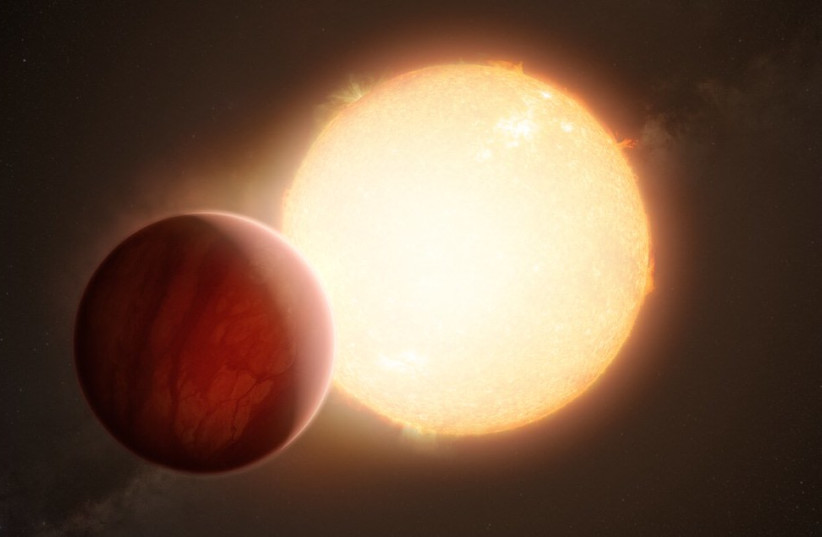950 light years from Earth, Jupiter-like planet is spiraling off
A large, Jupiter-like alien world far off in space is losing so much atmospheric helium. It is spiraling off, leaving massive gas trails in its wake.
The process is creating what is essentially the largest known planetary structure anywhere in space, according to a recent study.
The exoplanet in question has been designated HAT-P-32b, located around 950 light years from Earth, and was imaged using a 3D simulation from the Stampede2 supercomputer based on data from the Hobby-Eberly Telescope.
The findings of this study were published in the peer-reviewed academic journal Science Advances.
A planet blows its top: What happens when the atmosphere starts to vanish?
HAT-P-32b is an exoplanet whose existence was first verified in 2011. A gas giant, the planet is considered to be a “hot Jupiter,” a planetary designation referring to its physical similarity to Jupiter. These planets also rotate around their stars very quickly.
The fact that their orbital rotation is so short is indicative of them being very close to their host star, which would mean their surface temperature was very hot.
 Artist’s impression of an ultra-hot Jupiter transiting its star. (credit: FLICKR)
Artist’s impression of an ultra-hot Jupiter transiting its star. (credit: FLICKR)Being a hot Jupiter, HAT-P-32b is naturally huge but more complex. For one thing, in terms of its mass, this exoplanet is significantly less massive than Jupiter. But despite this, this exoplanet is still massive in terms of sheer distance, boasting one of the largest known radii of all exoplanets.
Specifically, NASA notes that HAT-P-32b has a mass of approximately 0.68 Jupiter. Furthermore, the orbit of this planet around its star is so close and fast that one complete orbit occurs roughly every 53 hours.
For context regarding how close HAT-P-32b’s orbit is to its star, Earth is one astronomical unit or about 93 million miles from the sun. The distance between HAT-P-32b and its star is approximately 30 times shorter, a space just shy of 3.2 million miles.
The planet, however, is losing its atmospheric helium, leading to dramatic effects. The study’s authors write that the escaping helium is creating “extended leading and trailing tails spanning a projected length over 53 times the planet’s radius. These tails are among the largest known structures associated with an exoplanet.”
Scientists observing this hot Jupiter planet hope to use their observations to gain insights into an astronomical phenomenon wherein scientists have noticed a marked lack in the number of observed short-period Neptune-mass planets.
The researchers posit that this phenomenon is primarily driven by atmospheric escape, such as with HAT-P-32b.





Comments are closed.